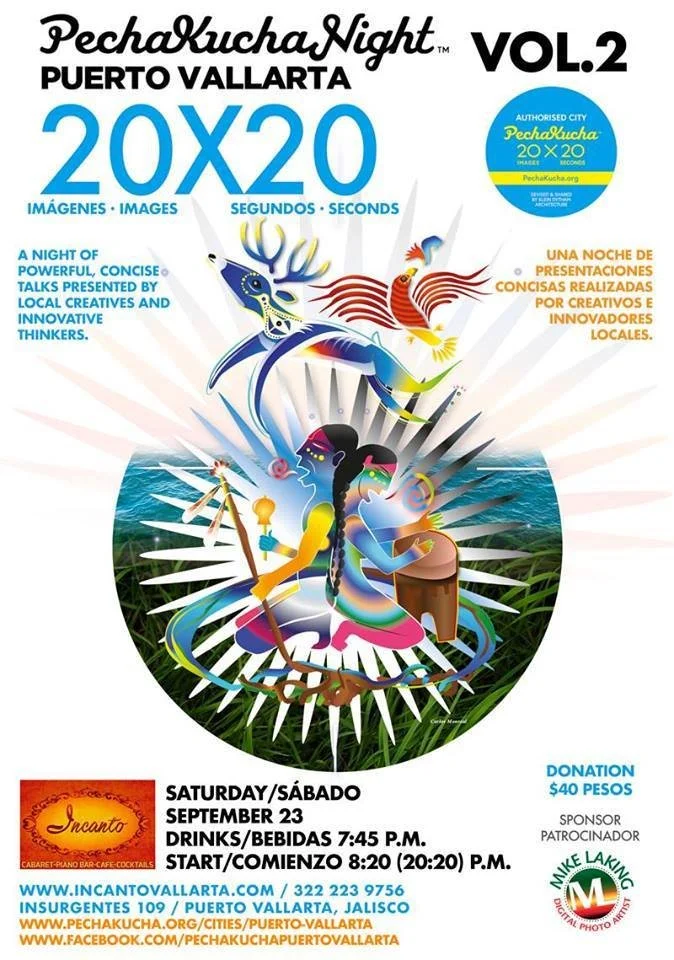3 Necessary Ingredients of a Powerful Story
Increase the impact of your story by including these elements.
I wanted to kick off the blog with a post for those of you in the process of creating a new story or presentation. We’ll be looking at one of the best analyses of storytelling that I’ve seen recently - this TED Talk by David JP Phillips. Below, I briefly summarize his main points and then offer my own insights and take-aways.
Phillips argues that by including certain elements in their stories, speakers can induce three powerful hormones, each with their own particular beneficial effects.
I bet you had no idea we were going to be talking about hormones, huh? :) If you're a public speaker, you're really gonna wanna keep reading.)
The first hormone you want to induce is dopamine, which improves focus, motivation, and memory. In the context of a presentation, dopamine will help people listen and remember what you talked about. To induce dopamine, you need to create suspense.
Next is oxytocin, which increases generosity, trust and has a bonding effect. The more your audience trusts and bonds with you, the more likely it is that you can persuade them successfully.
To produce oxytocin, you build empathy with your audience. Simply put, you get them to like you.
The third hormone you want to induce is endorphins, which increase creativity, relaxation and focus. Relaxation will make your audience more receptive to your message. (Remember how much better you did in a class where the teacher helped you relax, and laugh?)
To generate endorphins, you make people laugh. He then explains what happens when you scare your audience - you induce cortisol and adrenalin. When there are high levels of cortisol, it's not pretty - the results are feeling intolerant, irritable, uncreative, critical, as well as having trouble remembering and making bad decisions.
Finally, he encourages the audience to engage in “functional storytelling” by first, recognizing that as humans we are natural storytellers. Then he suggests that you write your stories, and group them based on which “good” hormones they induce.
Over time you'll have a collection of stories that you can draw from to use within your presentations. What's more, you can strategically choose the best story to create the desired effect at any given time.
My Take-aways
I found it fascinating that much of what I’ve learned about some really basic aspects of storytelling is supported by Phillips’ proposition. For example, according to Philips, the typical story arc works because it’s creating suspense as it builds to an exciting climax, and releasing dopamine in the process.
And, developing “likeable” characters which your audience can identify with (even if that “character” is you), is effective because it builds empathy, which releases oxytocin.
Armed with all of this info, I decided to try out Phillips’ ideas in a recent talk that I did for a Pecha Kucha Night. Of course, I wanted to induce all of the good hormones, but I only had about 6.5 minutes to do so, so it was a great challenge.
I decided to start out by talking about myself, trying to be transparent in an effort to create empathy.
I talked about how I'm kind of always asking philosophical questions about life, such as "why are we here?" and "what's out there?" I knew that I should throw in some self-deprecating jokes, as this would cover humor and hopefully create even more empathy, so I told a story about how I went salsa dancing and got impaled by another women's high heel.
I included a few more humorous comments at various points later in the talk as well, because my topic - child sex trafficking - was heavy and I didn’t want my audience to become overwhelmed and tune out.
The suspense aspect was the most challenging, but with this goal in mind, I went back to what I know about basic storytelling. To build suspense, you need to have a clearly defined, serious problem, and it needs to not be resolved too quickly or easily.
So I reworked my text, very directly stating the problem as close to the beginning of the “story” as I could and then trying to build from there to the resolution. I wouldn’t call my final version suspenseful. But I’d like to think that people were curious about what was going to happen next and wondering how I finally resolved my problem.
Obviously, building empathy and suspense while being funny are not new ideas to storytelling. Nevertheless, I found it helpful to view my presentation from Phillips’ perspective of inducing particular hormones.
Apart from the technical glitch I experienced (I was using my phone for notes and the notes wouldn’t load…arghhhhh…won’t ever do that again!), I felt good about the end result. You can have a look at my talk here and see for yourself.
Let me know in the comments how YOU find ways to include these elements in your next story.






